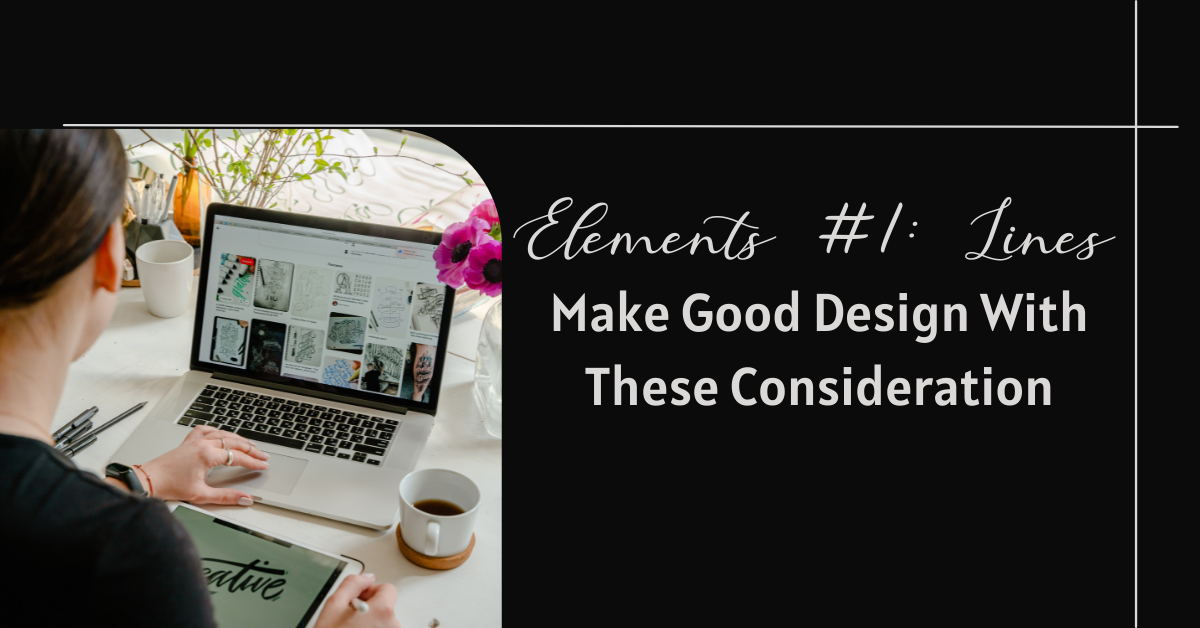One of the most fundamental components of design are lines. They may be employed to produce movement, space, texture, shape, and form. Effective use of lines may provide a design interest, contrast, and cohesion. There are a number factors to take into account while selecting lines for your design, including the line’s thickness, length, and pattern.
1. Line Weight or Thickness
When applying design components, line weight is a crucial factor to take into account since it may assist provide a sense of depth, movement, and visual intrigue. While lighter lines stand out and appear to be closer to the observer, heavier lines typically fade into the background. This can be done to give a design depth or to draw attention to key components. By utilising stronger lines to guide the eye around a design, line weight may also be employed to evoke a sensation of movement. Finally, varied line weights may be utilised to add texture and dimension to drawings by utilising a range of thicknesses.
2. Repetition
Because it may foster a sense of cohesion within a piece, repetition is a crucial component of design. Repetition of lines may give a poem a feeling of rhythm and movement. They can also be used to highlight particular design aspects. Repetition may also contribute to a design’s impression of harmony and proportion.
3.Pattern
There are a few situations where a dotted line or dashed line might be preferable than a solid line. One justification is if you want to convey a feeling of motion or energy. If the dots or dashes are near together, this may be extremely powerful. If you want to get a softer, more delicate appearance, that is another reason. The dots or dashes should be wider apart for this to be most effective. Finally, if you want to imply that something is imperfect or transient, you might wish to use a dotted or dashed line
4.Color
One of the most crucial factors to take into account when using design components like lines is colour. This is due to the significant influence that colour can have on the overall feel and aesthetic of a design. For instance, a line might stick out and be more noticeable if it is coloured brightly, whereas a line coloured darkly can be more modest and discreet. Additionally, colour may be employed in a design to evoke certain attitudes and environments. For instance, the use of warm hues like red and orange may give a design a more energising and thrilling sense, while the use of cool hues like blue and green can give it a more tranquil and restful one. In the end, the designer choose which colour to use.
5. Spacing
One of the most crucial factors to take into account while dealing with lines is spacing. This is due to the fact that lines may be employed to convey a feeling of depth, movement, and space. You may make a design feel free and airy or confined and personal by paying great attention to the distance between lines. Additionally, lines can be utilised to convey motion. You may imply movement and vitality by placing lines closely together. On the other hand, you may evoke a sense of quiet and stillness by spreading the lines farther apart. It’s crucial to consider the overall impression you want to achieve while working with lines. Do you desire an airy, open vibe for your design? Do you wish to convey a feeling of motion? or serenity and silence? You may make a design that feels exactly perfect by carefully examining the distance between lines.
6. Length
When using lines in design, length is a crucial factor to take into account. This is due to the fact that line length may significantly affect how a design appears and feels as a whole. For instance, shorter lines are typically more brisk and fun, but longer lines may be more refined and exquisite. The line thickness should also be taken into account. While smaller lines might be more delicate and subtle, thicker lines often have a stronger presence and are easier to notice. To get the intended impact, it is crucial to take into account the lines’ length and thickness while applying them to designs.
Conclusion
When utilising the design element of lines, there are numerous aspects to take into account. Some factors you might want to take into account include the kind of line you want to employ (straight, curved, etc.), its thickness, its orientation, and its colour. You may use lines to create a number of distinct appearances by keeping all of these things in mind. Keep checking Artmeet for new design components.
Read more about Elements of Design here:

